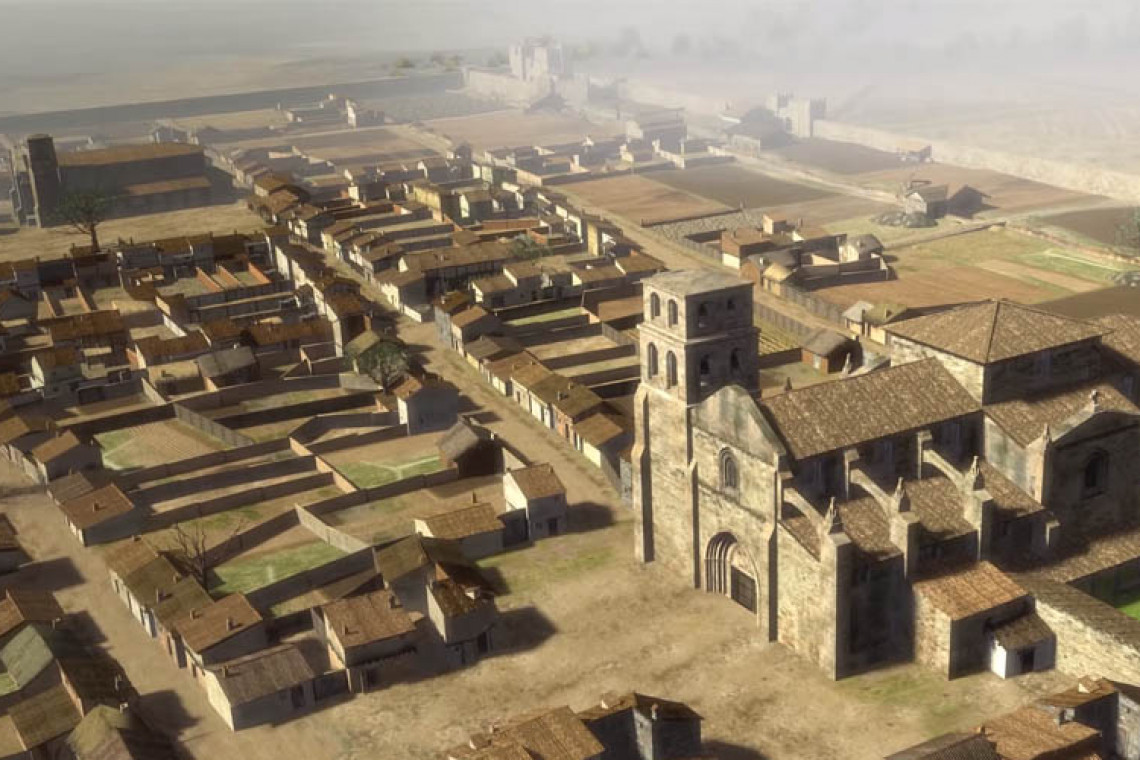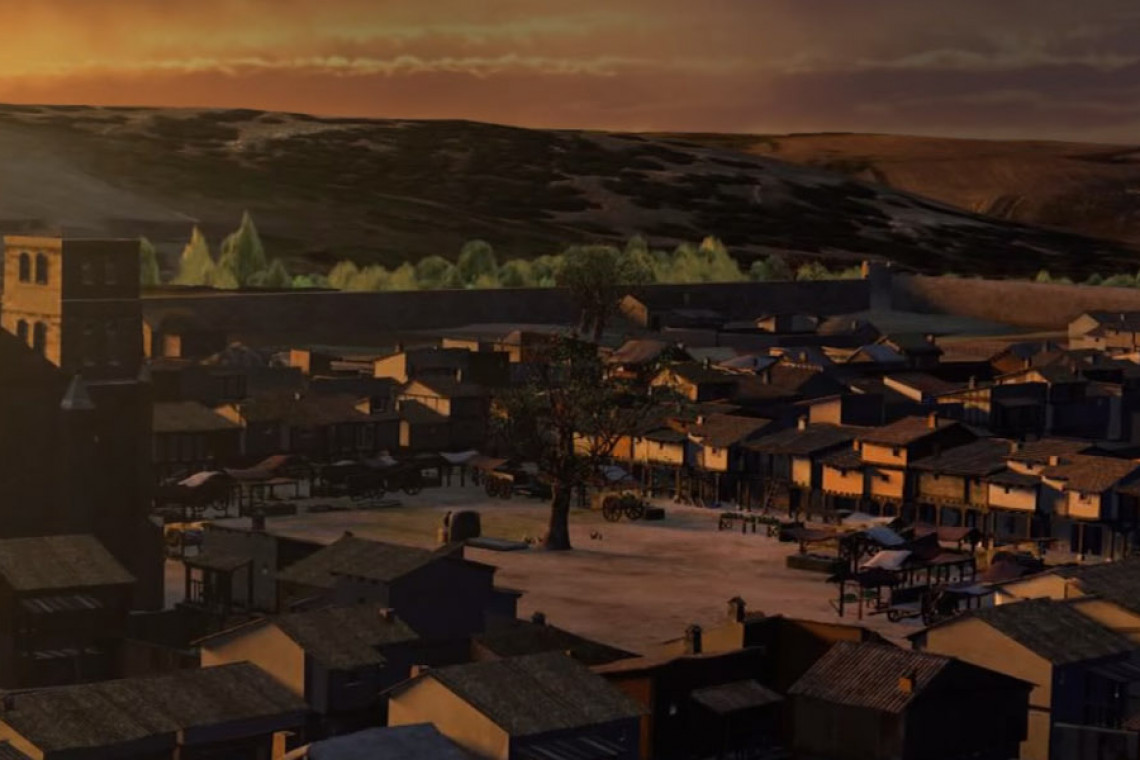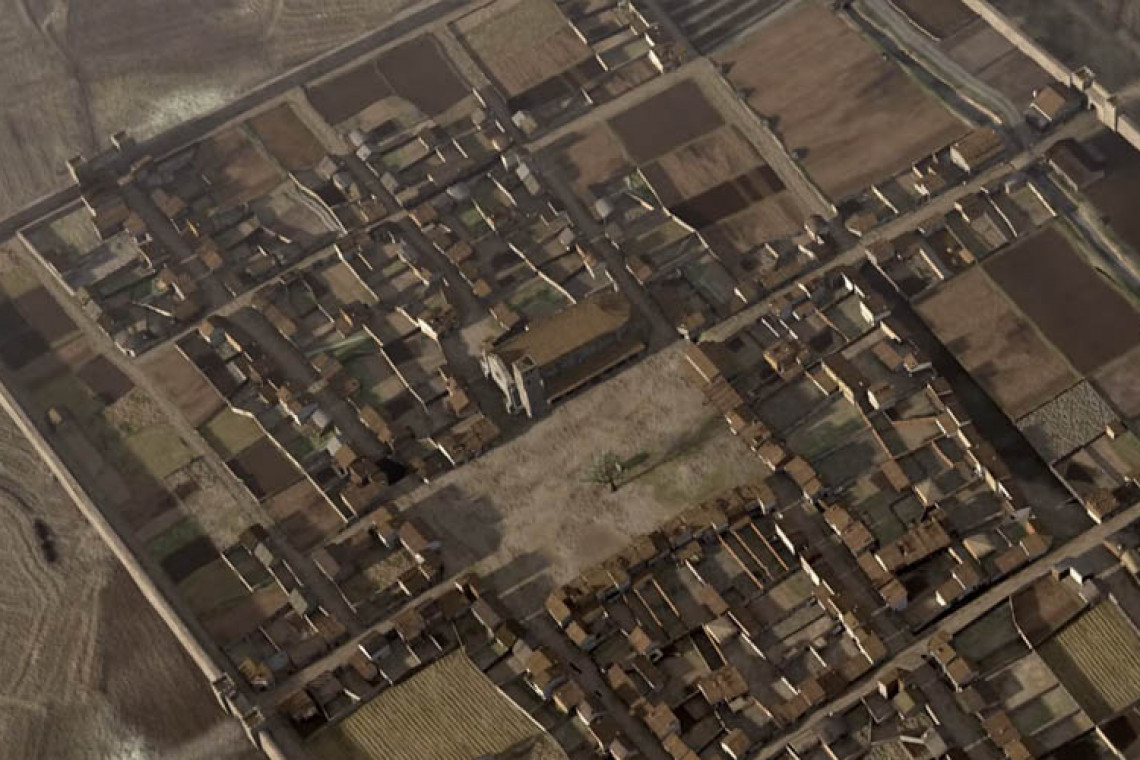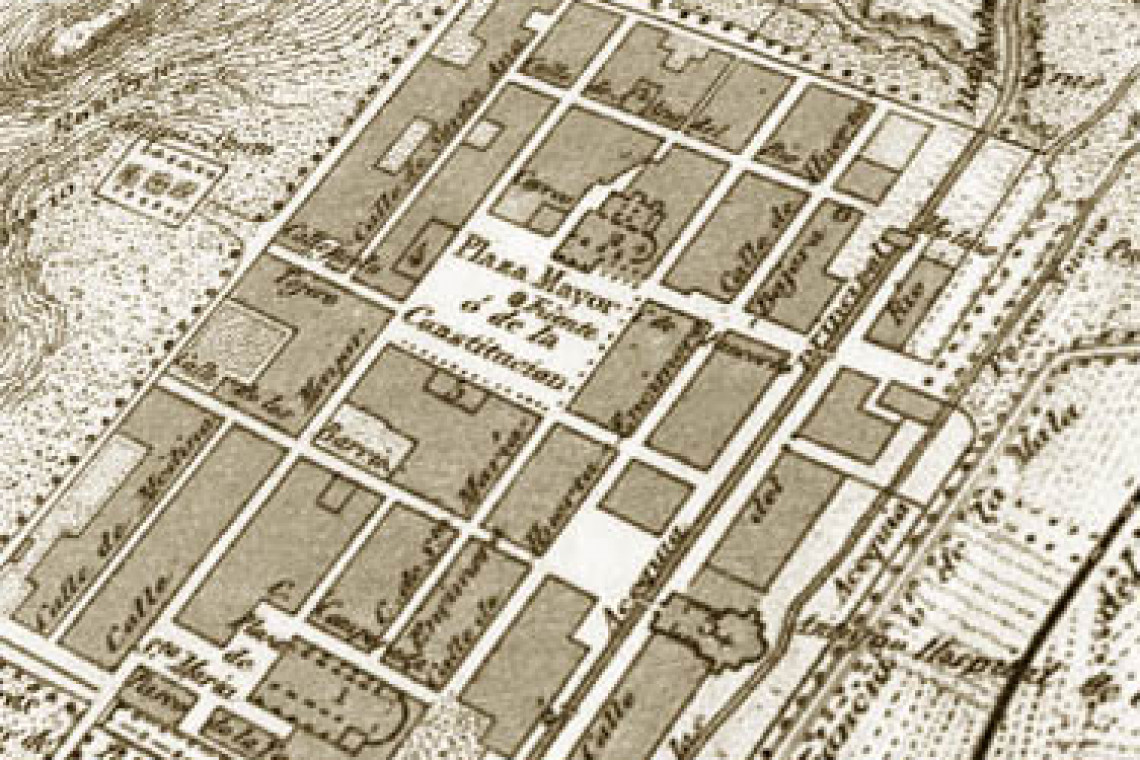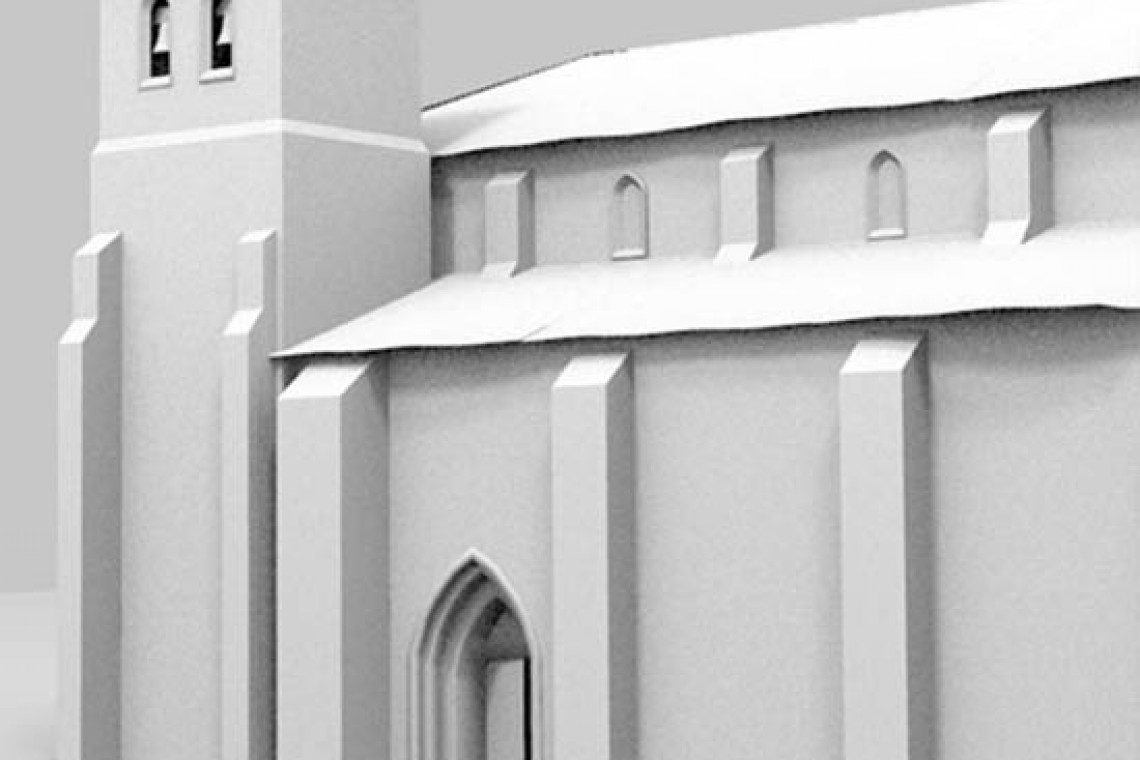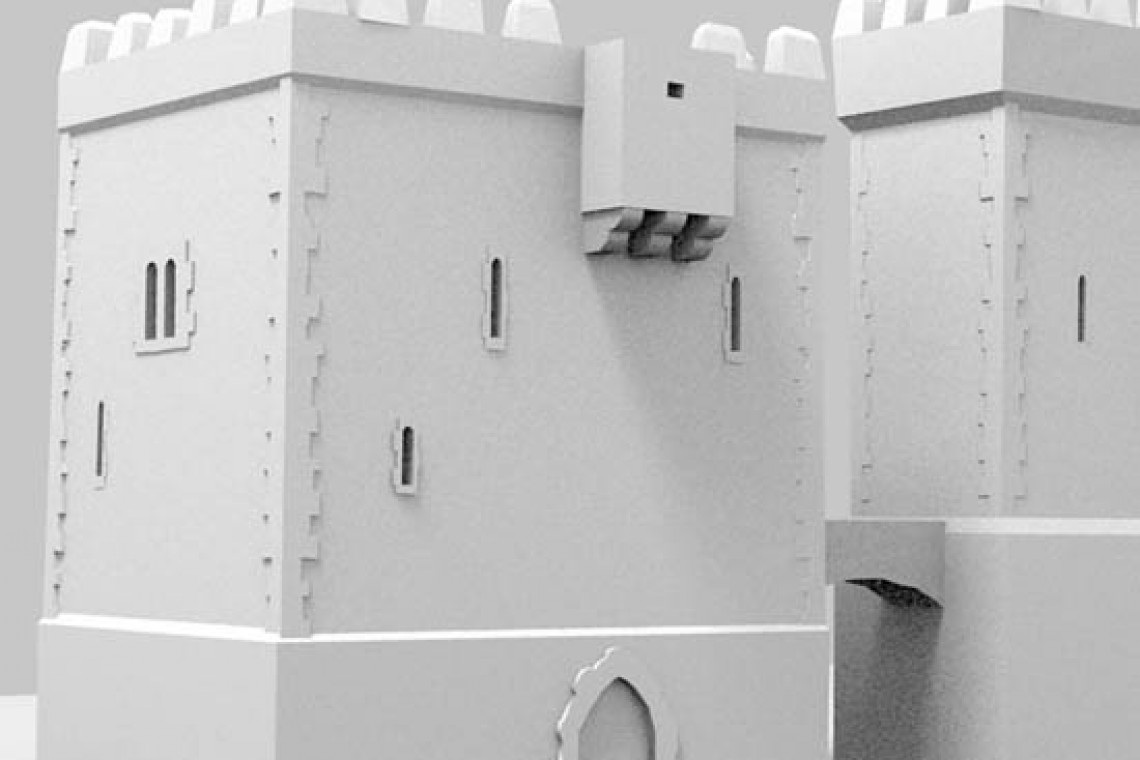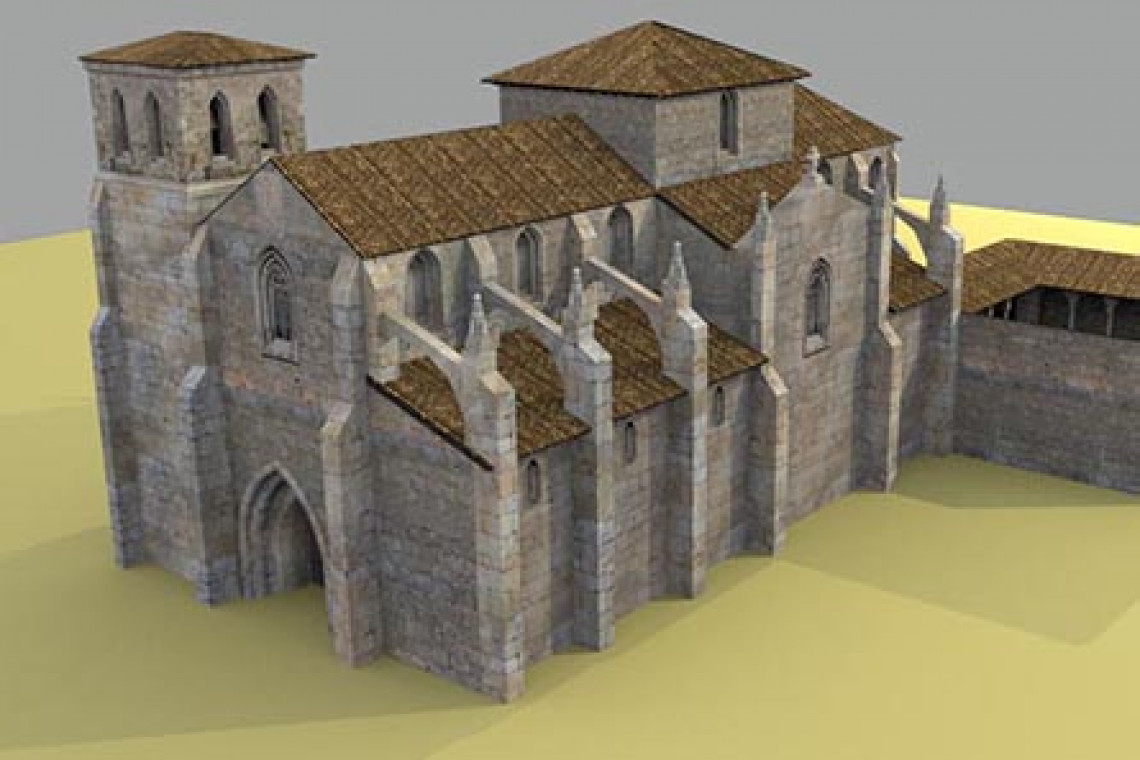Briviesca has completely changed its buildings since the 14th century, so a meticulous documentation process was carried out using historical texts, research articles, geographical documentation, old photographs and comparative research with other types of towns to acquire as much information as possible.
Virtual reconstruction carried out with a high level of detail. The model has been based on a historical elucubration from available documentation sources.
The model is made with Blender 3D software and five of our members participated in its creation. The final model has about 4 million polygons and is the basis for an audiovisual documentary about the history of Briviesca.
Documentation

Elucrative research
Filling the historical information gap
Once all the material was compiled, it was interpreted by Lena Saladina Iglesias Rouco, Professor of Art History, and Ana Peña Varó, PhD in History, both from the University of Burgos, and an interpretative lucubration was carried out to fill in the gaps of information, thus being able to make an interpretation of what Briviesca may have been like in the 14th century.
A location plan was drawn up, with the exact locations of the known buildings and a proposal of how the rest of the Villa's layout could be filled in.
3D Modeling
The 3D modeling phase was based on the great complexity of such a large model. The execution was approached from the optimization of resources, trying to adapt the objectives to the available resources: human, temporal and technical.
In order to optimize modeling times, a calculation of work times and resource consumption in rendering with different levels of detail was made to extrapolate them to the complete set of the final model. It was decided to go for a polygonal modeling that was improved by including the model in virtual reality visualization.

Subsequently, several models of houses with very significant differences were made, which were reused from variations in their structure for the elaboration of about 200 different elements.

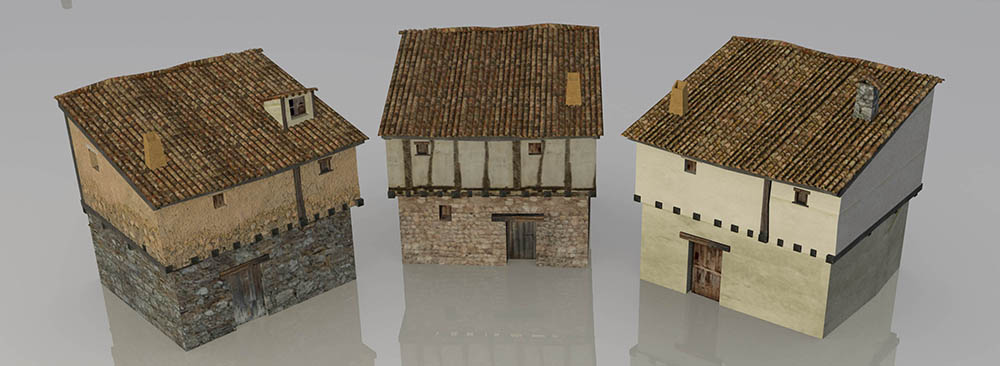
Singular buildings
The unique buildings were modeled on the basis of historical research and with the supervision of specialists, being, due to their characteristics, the ones that required more resources.
Virtual Reality
A new way to visualize virtual heritage reconstructions
The model was improved and incorporated in 2016 to an interactive walk made with the Unreal Engine that allowed a high percentage of the site to be visited at street level. This virtual walk was added to a virtual reality viewing system, with the Oculus Rift, with which we were able to investigate the educational capacity of this new technology for the social dissemination of heritage.

ACADEMIC PUBLICATIONS
M. Alaguero, A.Bustillo, B. Guinea, L. S. Iglesias
“The virtual reconstruction of a small city from the Late Middle Ages: the case of Briviesca”
Proceedings of the 42th Conference on Computer Applications and Quantitative Methods in Archaeology, Paris, France, April 2014
Checa, D., Alaguero, M., Arnaiz, M. A., & Bustillo, A. (2016, June). Briviesca in the 15 th c.: a virtual reality environment for teaching purposes. In International Conference on Augmented Reality, Virtual Reality and Computer Graphics (pp. 126-138). Springer, Cham. http://doi.org/10.1007/978-3-319-40651-0_11
Checa, D., & Bustillo, A. (2020). Advantages and limits of virtual reality in learning processes: Briviesca in the fifteenth century. virtual reality, 24(1), 151-161. http://doi.org/10.1007/s10055-019-00389-7

